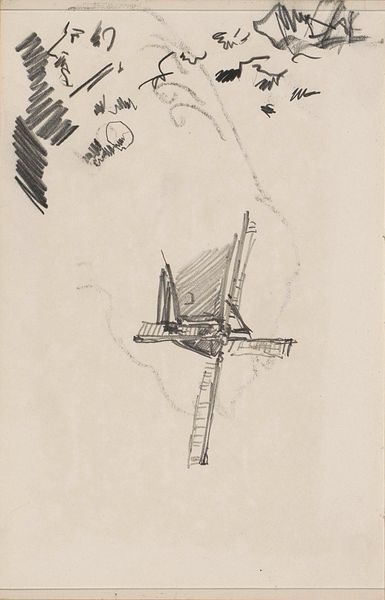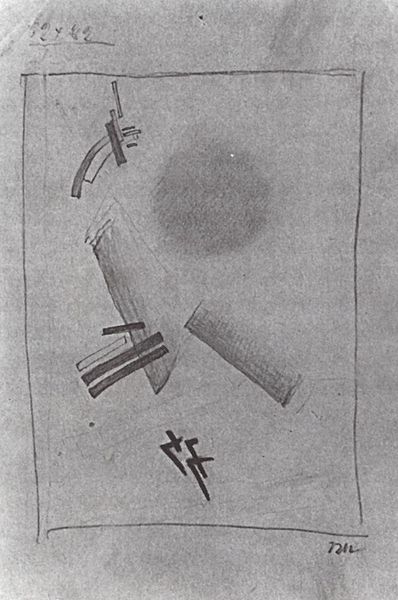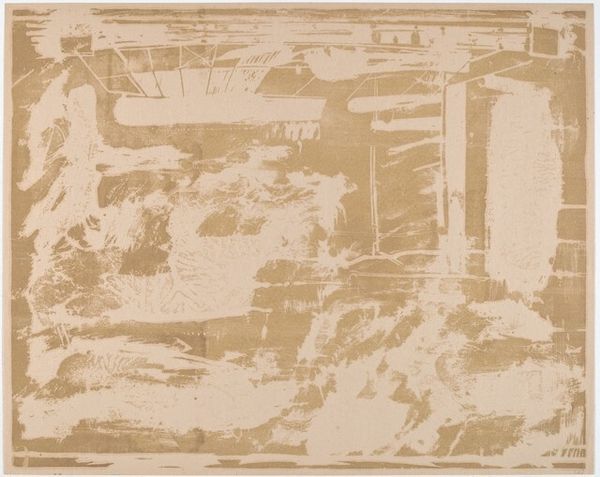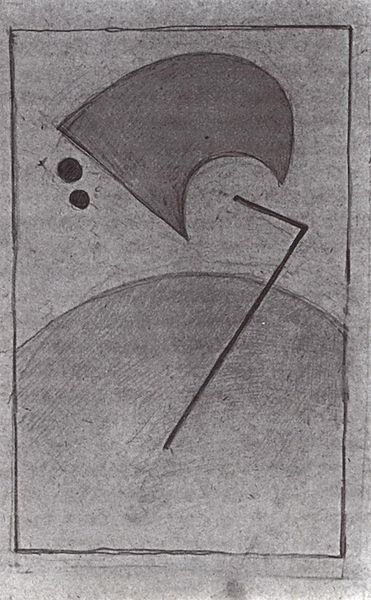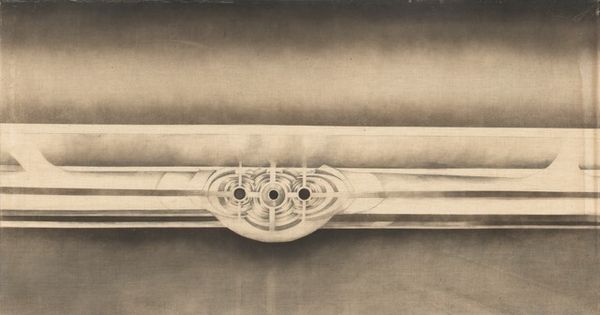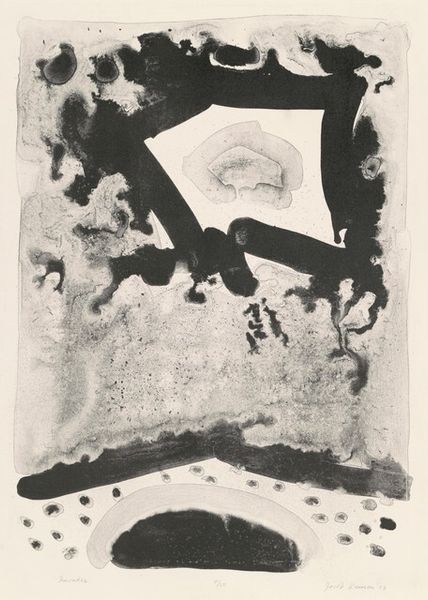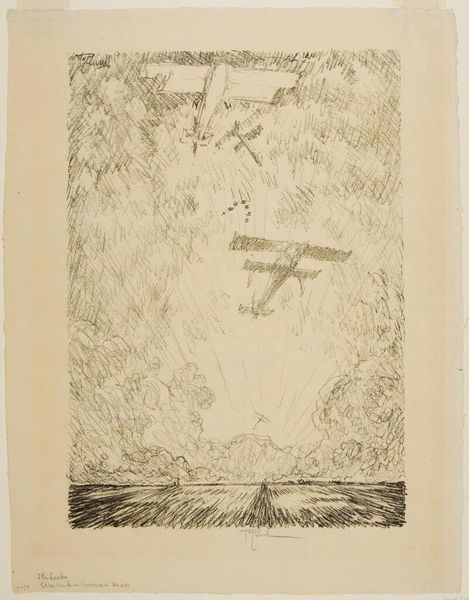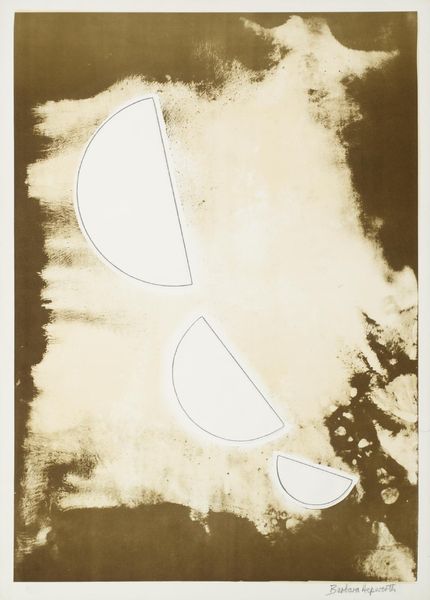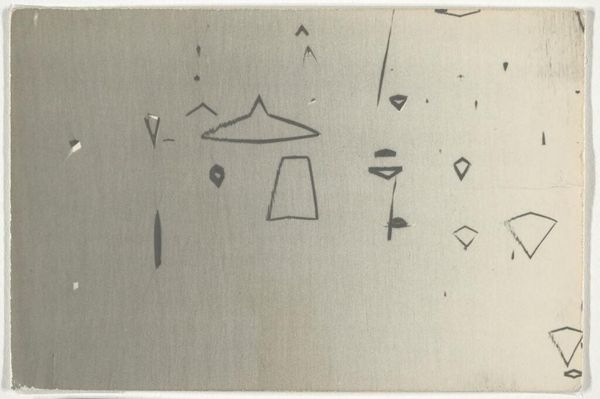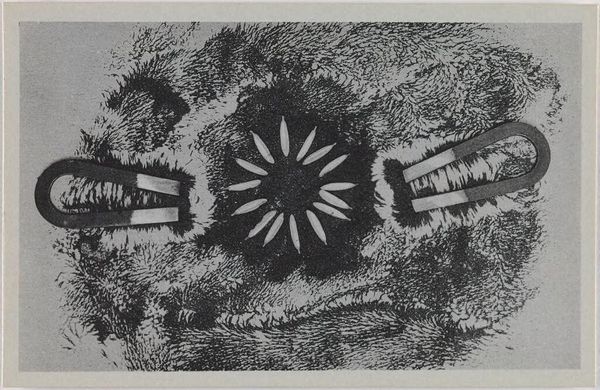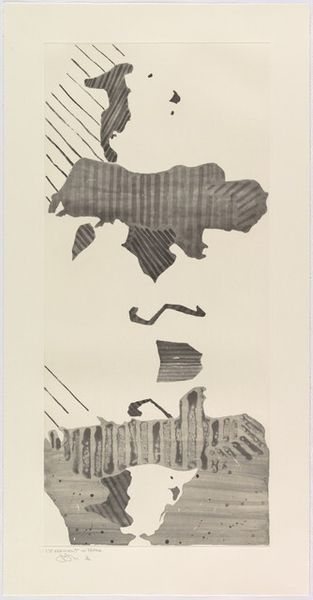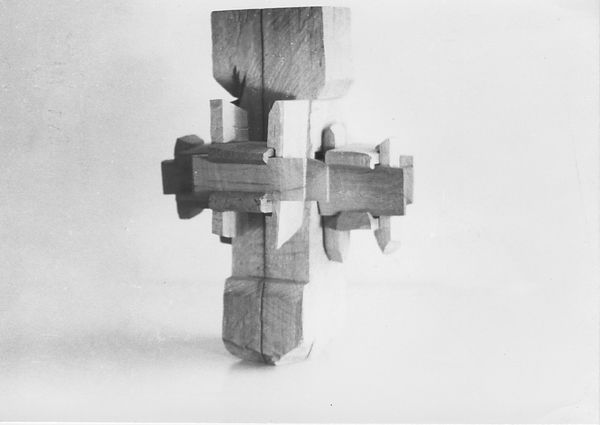
drawing, pencil
#
drawing
#
symbol
#
pencil sketch
#
figuration
#
pencil
#
abstraction
#
symbolism
Copyright: Public domain
Curator: Let’s spend a moment with August Natterer's "Antichrist," created in 1917 using pencil on paper. What strikes you about it? Editor: It’s unsettling, the way that stark figure dominates the soft, almost formless head. There’s a real power dynamic being portrayed. Curator: Yes, the drawing offers a glimpse into Natterer’s inner world, reflecting the symbolic language he developed following his psychotic breakdown. The figure emerging from the head suggests divine communication or perhaps even imposition. Consider how the central figure has open arms in what may read as the gesture of crucifixion, further burdened with linear, vertical scars from head to toe. Editor: So, thinking of that stark symbolism, can we unpack that figure standing over what I perceive as a head in profile? Is the Antichrist a figure of opposition here, planted as a destructive ideology *within* someone's mind? And what's the head itself— a societal stand-in, perhaps? Curator: It's tempting to see it that way. Natterer used a visual lexicon influenced by his delusions and visions; so these shapes can be perceived as external forces invading consciousness, a mental state imposed from without. The repetition of linear elements throughout the artwork creates a feeling of both order and confinement, and indeed there is a looming symbolic power. Editor: That makes sense in terms of external forces overriding a thinking mind—especially given its creation during the upheaval of World War One and societal fragmentation at the time. But who gets to determine what's orthodox versus what is antithetical? To name an opposing figure, to cast them into eternal struggle against oneself? This can trigger self-imposed oppression of those very figures—often through a type of symbolic othering. Curator: Indeed. The visual symbols within the artwork continue to resonate, tapping into our own cultural memory and understanding of opposition, orthodoxy, and control. And indeed its placement on the profile of the head also leads us to that interior symbolic drama. Editor: The rawness of the medium lends a kind of uncomfortable sincerity—there are these violent ideological conflicts playing out to this day on all sides that it makes you think about. Well, this drawing feels remarkably prescient considering. Curator: It serves as a reminder of the complex internal and external forces at play in our individual and collective experiences. Editor: Absolutely, leaving one with plenty to contemplate. Thank you.
Comments
No comments
Be the first to comment and join the conversation on the ultimate creative platform.
